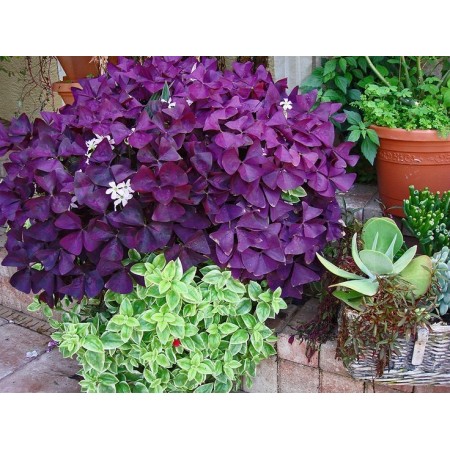Growing sorrel

Due to its unusual shape, acidic very often becomes a guest in modern apartments and private houses. The shape of the leaves of this flower resembles a flock of butterflies perched on your windowsill, so lovers of indoor plants prefer growing this representative flora. And in this article we will talk about all the nuances related to the care of acid at home.
Suitable place for the flowerpot
Kislitsa will feel comfortable both in the house and outside. It is best placed in a well-lit place, where a lot of diffused sunlight is present throughout the day. If you can’t place the flowerpot on the windowsill facing the east side, then curtains should be hung between the window and the pot, which will act as protection against direct ultraviolet radiation.
In summer and spring, you can take the acid to the open air, placing it on balconies, loggias and terraces. The abundance of fresh air will help the flower develop, delighting us with large purple leaves. However, with the onset of winter cold, a flowerpot should be brought into the room, since frost and sharp temperature drops will adversely affect this representative of the flora.
Air temperature and watering
In the spring-summer period, the optimal value for indoor air temperature will be an indicator in the range of 18-24 degrees of heat. Oxygen is a heat-loving flower, so a standard temperature that is comfortable for a person will have a beneficial effect on it. However, when the central heating is turned on, you should remove the flowerpot away from batteries and radiators, since the heating equipment dries the air too much.
A favorable temperature in winter will be an indicator within 16 degrees of heat - under such conditions, the sour will quickly fall into a state of rest in order to gain strength before the next flowering season.
As for irrigation, moisten the soil in summer and spring should be regular, avoiding the bay. The sour is very fond of spraying the leaves with warm, cleaned from impurities moisture. True, these procedures should be performed only in the hot season. In winter, the amount of liquid introduced into the soil is reduced to a minimum.
Feeding and transplanting
Mineral fertilizers are applied to the soil during the period of active growth of acidity - from April to August. In order not to burn the roots, top dressing should be applied no more than once a month, which does not always coincide with the conditions indicated on the package.
A transplant in a large container for young plants is recommended once a year. More mature acid is transplanted no more often than every 2-3 years. At the bottom of the new pot, a thin layer of expanded clay is sure to be created, which serves as an artificial settler to rid excess fluid of acid.